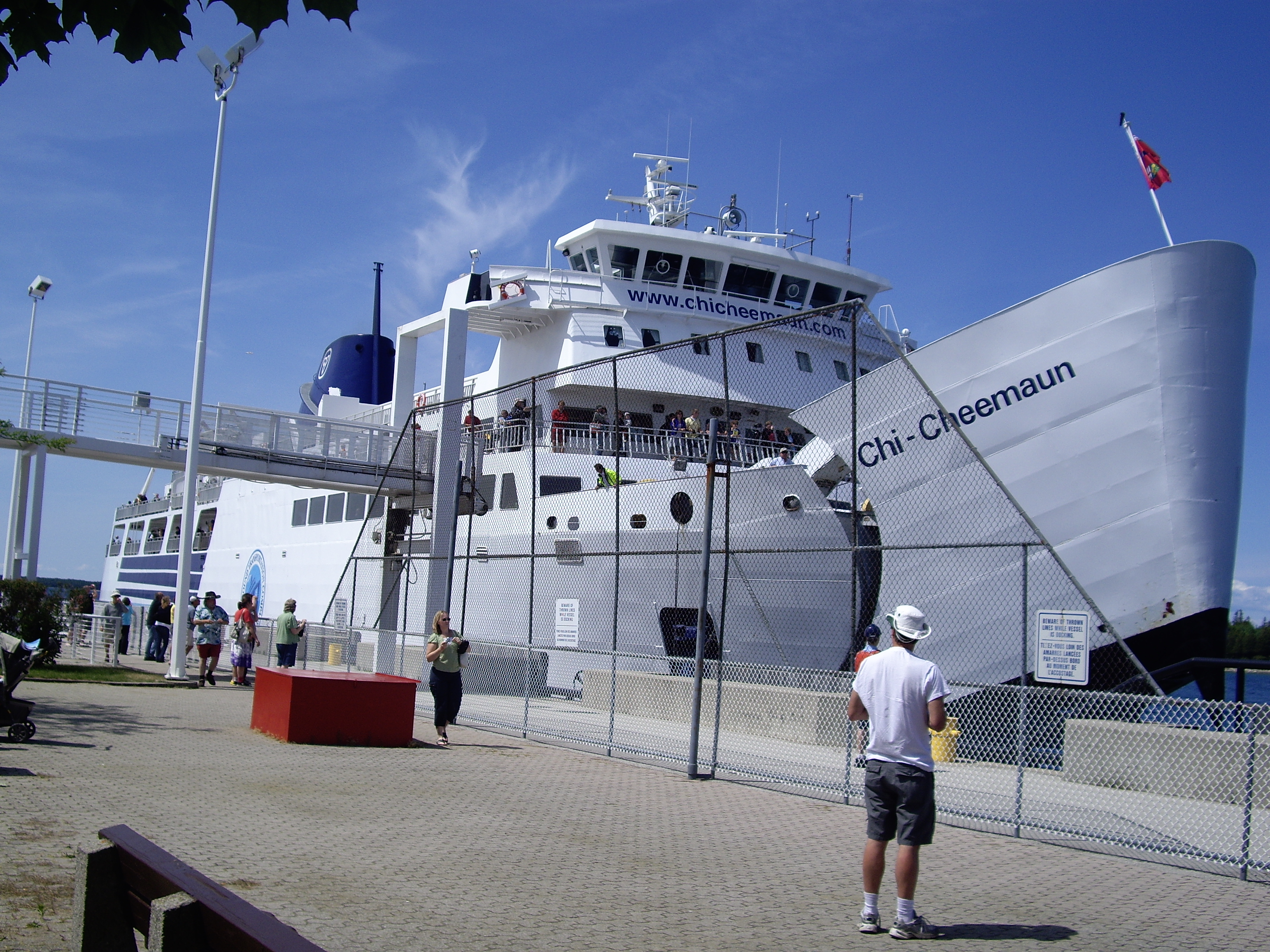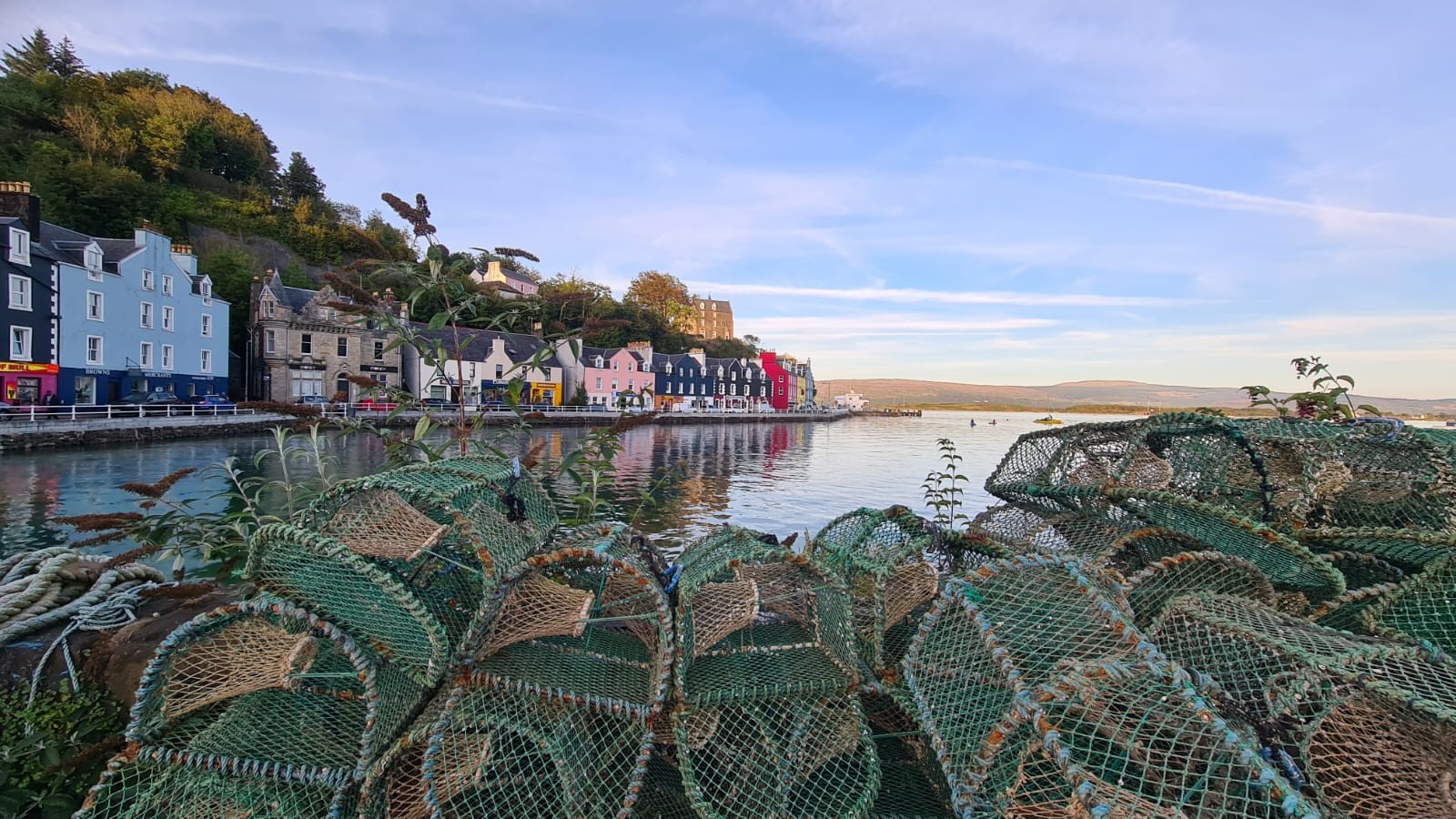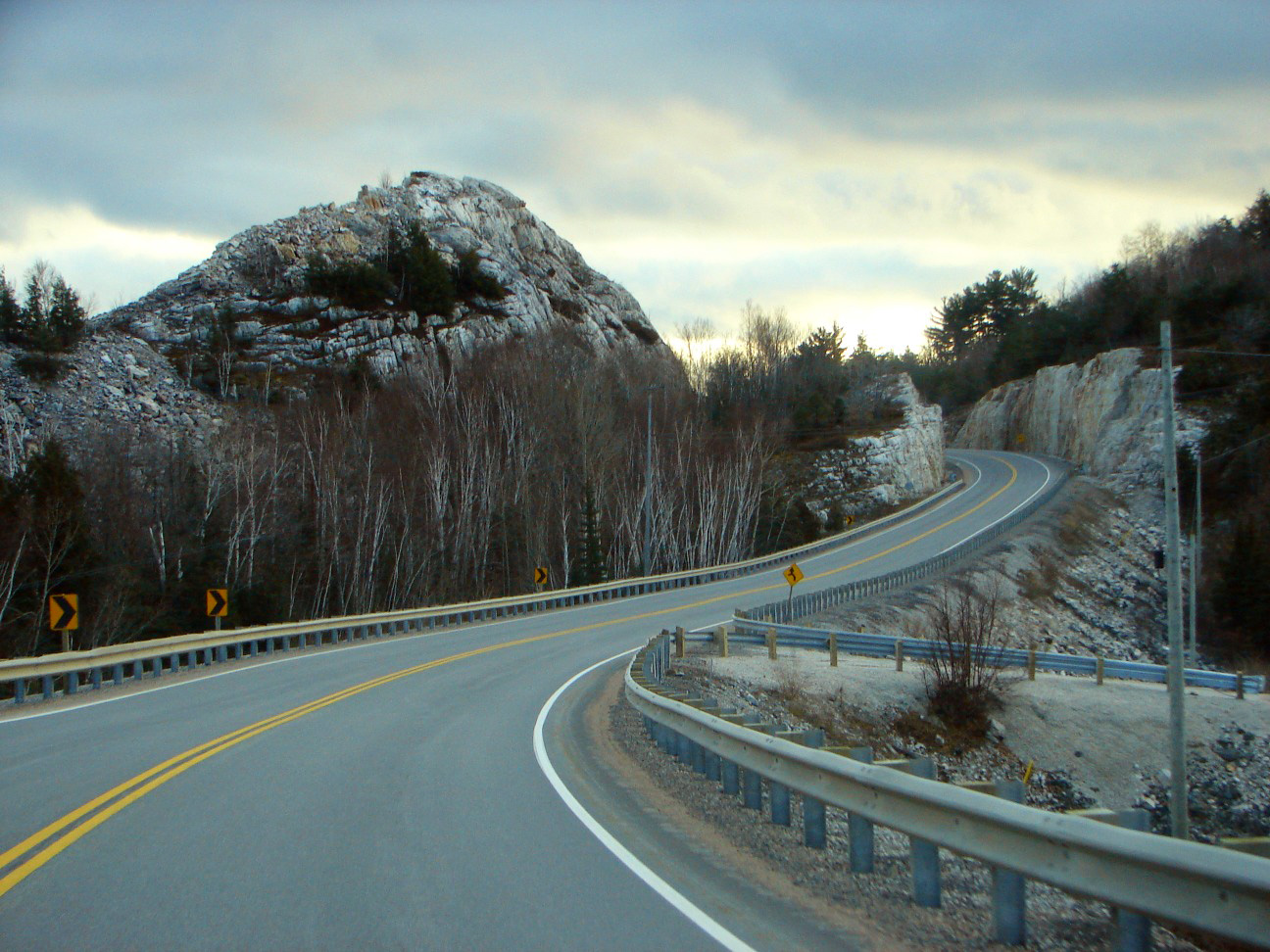|
Tobermory, Ontario
Tobermory is a small community located at the northern tip of the Bruce Peninsula, in the traditional territory of the Saugeen Ojibway Nation. Until European colonization in the mid-19th century, the Bruce Peninsula was home to the Saugeen Ojibway nations, with their earliest ancestors reaching the area as early as 7500 years ago. It is part of the municipality of Northern Bruce Peninsula. It is northwest of Toronto. The closest city to Tobermory is Owen Sound, south of Tobermory and connected by Highway 6. Naval surveyor Henry Bayfield originally named this Port Collins Harbour. Due to similar harbour conditions it was renamed after Tobermory (; gd, Tobar Mhoire), the largest settlement in the Isle of Mull in the Scottish Inner Hebrides. The community is known as the "fresh water SCUBA diving capital of the world" because of the numerous shipwrecks that lie in the surrounding waters, especially in Fathom Five National Marine Park. Tobermory and the surrounding area are popu ... [...More Info...] [...Related Items...] OR: [Wikipedia] [Google] [Baidu] |
Tobermory, Mull
Tobermory (; gd, Tobar Mhoire) is the capital of, and until 1973 the only burgh on, the Isle of Mull in the Scottish Inner Hebrides. It is located on the east coast of Mishnish, the most northerly part of the island, near the northern entrance of the Sound of Mull. The village was founded as a fishing port in 1788; its layout was based on the designs of Dumfriesshire engineer Thomas Telford. It has a current population of about 1,000. Etymology The name ''Tobermory'' is derived from the Gaelic ', meaning "Mary's well". The name refers to a well located nearby which was dedicated in ancient times to the Virgin Mary. Prehistory and archaeology Archaeological Excavations have taken place at Baliscate just outside of the town. The site was first noted by Hylda Marsh and Beverley Langhorn as part of the Scotland's Rural Past. In 2009, it was partially excavated Time Team and a further longer excavation took place in 2012 as part of a community archaeology project through the ... [...More Info...] [...Related Items...] OR: [Wikipedia] [Google] [Baidu] |
Manitoulin Island
Manitoulin Island is an island in Lake Huron, located within the borders of the Canadian province of Ontario, in the bioregion known as Laurentia. With an area of , it is the largest lake island in the world, large enough that it has over 100 inland lakes itself. In addition to the historic Anishinaabe and European settlement of the island, archaeological discoveries at Sheguiandah have demonstrated Paleo-Indian and Archaic cultures dating from 10,000 BC to 2,000 BC.Lee, Thomas E. (1954). "The First Sheguiandah Expedition, Manitoulin Island, Ontario" ''American Antiquity'' 20:2, p. 101, accessed 13 Apr 2010 The current name of the island is the English version, via |
James Alan Gardner
James Alan Gardner (born January 10, 1955) is a Canadian science fiction author. Raised in Simcoe and Bradford, Ontario, he earned bachelor's and master's degrees in applied mathematics from the University of Waterloo. Gardner has published science fiction short stories in a range of periodicals, including ''The Magazine of Fantasy and Science Fiction'' and ''Amazing Stories''. In 1989, his short story "The Children of Creche" was awarded the Grand Prize in the Writers of the Future contest. Two years later his story "Muffin Explains Teleology to the World at Large" won a Prix Aurora Award; another story, "Three Hearings on the Existence of Snakes in the Human Bloodstream," won an Aurora and was nominated for both the Nebula and Hugo Awards. He has written a number of novels in a "League of Peoples" universe in which murderers are defined as "dangerous non-sentients" and are killed if they try to leave their solar system by aliens who are so advanced that they think of humans li ... [...More Info...] [...Related Items...] OR: [Wikipedia] [Google] [Baidu] |
Commitment Hour
''Commitment Hour'' is a science fiction novel by Canadian writer James Alan Gardner, published in 1998. The novel is set in Gardner's "League of Peoples's" futuristic universe, and plays out in the small, isolated village of Tober Cove. Set on post-apocalyptic Earth, Tober Cove most resembles a rural, seventeenth century fishing village, with one exception: every year, everyone below the age of 21 changes gender. At the age of twenty-one, the people of the village must "commit" to being male, female or both in the form of a Hermaphrodite (a 'Neut'), forever. ''Commitment Hour'' follows the day leading up to the main character's hour of commitment. Tober Cove's society revolves around gender. Dualistic in structure, there is a matriarch and a patriarch, both of whom command equal - but different - power within the community. The patriarch is the head of the city council and the military, which also serves as the town's police force. The matriarch runs the town's health services, ... [...More Info...] [...Related Items...] OR: [Wikipedia] [Google] [Baidu] |
Tobermory Airport
Tobermory Airport is located southeast of Tobermory, Ontario, Tobermory, Ontario, Canada. The airport operates from May to early October. No winter maintenance is offered. Facilities The airport has two small hangars to store aircraft (one per hangar), fuel station (Avgas or 100LL) and a building serving as the airport office. A small parking lot is found at the entrance along Warner Bay Road. Occasionally helicopters land near the parking lot; there is no formal helipad. The airport supports itinerant users like ORNGE, and search and rescue teams including the Ontario Provincial Police. Accidents * June 13, 1971: A Cessna 182 crashed short of the airport, killing five, with one survivor. * February 27, 2018: A Cessna 172 Skyhawk crashed in the snow with no injuries. The pilot was the only occupant, and the aircraft was badly damaged. * July 3, 2018: A Piper Warrior flipped after an aborted takeoff. The aircraft sustained damages and the pilot and passengers suffered minor ... [...More Info...] [...Related Items...] OR: [Wikipedia] [Google] [Baidu] |
MS Chi-Cheemaun
MS ''Chi-Cheemaun'' is a Canadian passenger and vehicle ferry in Ontario, Canada, which traverses Lake Huron between Tobermory on the Bruce Peninsula and South Baymouth on Manitoulin Island. The ferry connects the two geographically separate portions of Highway 6 and is the vessel that replaced and in 1974. The ferry service runs seasonally from mid-May to mid-October. As of 2022 she is the third largest passenger vessel sailing the Great Lakes after the expedition cruise liner Viking Octantis and the US ferry SS Badger, although several larger vessels previously serving the Great Lakes are still in service in other parts of the world. Literally translated, "chi-cheemaun" (in folk orthography or ''chi-jiimaan'' in the more standard Fiero double vowel spelling) means "big canoe" in Ojibwe. History A trip aboard ''Chi-Cheemaun'' is a long standing Great Lakes tradition dating back to the 1930s when a small, wooden vessel, ''Kagawong'', first ferried vehicles across the Georgi ... [...More Info...] [...Related Items...] OR: [Wikipedia] [Google] [Baidu] |
Georgian Bay
Georgian Bay (french: Baie Georgienne) is a large bay of Lake Huron, in the Laurentia bioregion. It is located entirely within the borders of Ontario, Canada. The main body of the bay lies east of the Bruce Peninsula and Manitoulin Island. To its northwest is the North Channel. Georgian Bay is surrounded by (listed clockwise) the districts of Manitoulin, Sudbury, Parry Sound and Muskoka, as well as the more populous counties of Simcoe, Grey and Bruce. The Main Channel separates the Bruce Peninsula from Manitoulin Island and connects Georgian Bay to the rest of Lake Huron. The North Channel, located between Manitoulin Island and the Sudbury District, west of Killarney, was once a popular route for steamships and is now used by a variety of pleasure craft to travel to and from Georgian Bay. The shores and waterways of the Georgian Bay are the traditional domain of the Anishinaabeg First Nations peoples to the north and Huron-Petun (Wyandot) to the south. The bay was th ... [...More Info...] [...Related Items...] OR: [Wikipedia] [Google] [Baidu] |
Ontario Highway 6
King's Highway 6, commonly referred to as Highway 6, is a provincially maintained highway in the Canadian province of Ontario. It crosses a distance of between Port Dover, on the northern shore of Lake Erie, and Espanola, on the northern shore of Lake Huron, before ending at the Trans-Canada Highway ( Highway 17) in McKerrow. Highway 6 was one of several routes established when Ontario first introduced a highway network on February 26, 1920, following several pioneer wagon trails. The original designation, not numbered until 1925, connected Port Dover with Owen Sound via Hamilton and Guelph. When the Department of Highways (DHO) took over the Department of Northern Development (DND) in 1937, Highway 6 was extended north through the Bruce Peninsula to Tobermory. In 1980, the entire length of Highway 68 on Manitoulin Island and north to Highway 17 became a northern extension of Highway 6. Small modifications were made to the route of High ... [...More Info...] [...Related Items...] OR: [Wikipedia] [Google] [Baidu] |
Chi-Cheemaun
MS ''Chi-Cheemaun'' is a Canadian passenger and vehicle ferry in Ontario, Canada, which traverses Lake Huron between Tobermory on the Bruce Peninsula and South Baymouth on Manitoulin Island. The ferry connects the two geographically separate portions of Highway 6 and is the vessel that replaced and in 1974. The ferry service runs seasonally from mid-May to mid-October. As of 2022 she is the third largest passenger vessel sailing the Great Lakes after the expedition cruise liner Viking Octantis and the US ferry SS Badger, although several larger vessels previously serving the Great Lakes are still in service in other parts of the world. Literally translated, "chi-cheemaun" (in folk orthography or ''chi-jiimaan'' in the more standard Fiero double vowel spelling) means "big canoe" in Ojibwe. History A trip aboard ''Chi-Cheemaun'' is a long standing Great Lakes tradition dating back to the 1930s when a small, wooden vessel, ''Kagawong'', first ferried vehicles across the Georgia ... [...More Info...] [...Related Items...] OR: [Wikipedia] [Google] [Baidu] |
Environment Canada
Environment and Climate Change Canada (ECCC; french: Environnement et Changement climatique Canada),Environment and Climate Change Canada is the applied title under the Federal Identity Program; the legal title is Department of the Environment (). is the department of the Government of Canada responsible for coordinating environmental policies and programs, as well as preserving and enhancing the natural environment and renewable resources. It is also colloquially known by its former name, Environment Canada (EC; french: Environnement Canada, links=no). The minister of environment and climate change has been Steven Guilbeault since October 26, 2021; Environment and Climate Change Canada supports the minister's mandate to: "preserve and enhance the quality of the natural environment, including water, air, soil, flora and fauna; conserve Canada's renewable resources; conserve and protect Canada's water resources; forecast daily weather conditions and warnings, and provide detaile ... [...More Info...] [...Related Items...] OR: [Wikipedia] [Google] [Baidu] |
Humid Continental Climate
A humid continental climate is a climatic region defined by Russo-German climatologist Wladimir Köppen in 1900, typified by four distinct seasons and large seasonal temperature differences, with warm to hot (and often humid) summers and freezing cold (sometimes severely cold in the northern areas) winters. Precipitation is usually distributed throughout the year but often do have dry seasons. The definition of this climate regarding temperature is as follows: the mean temperature of the coldest month must be below or depending on the isotherm, and there must be at least four months whose mean temperatures are at or above . In addition, the location in question must not be semi-arid or arid. The cooler ''Dfb'', ''Dwb'', and ''Dsb'' subtypes are also known as hemiboreal climates. Humid continental climates are generally found between latitudes 30° N and 60° N, within the central and northeastern portions of North America, Europe, and Asia. They are rare and i ... [...More Info...] [...Related Items...] OR: [Wikipedia] [Google] [Baidu] |
Long Weekend
A long weekend is a weekend that is at least three days long (i.e. a three-day weekend), due to a public or unofficial holiday occurring on either the following Monday or preceding Friday. Many countries also have four-day weekends, in which two days adjoining the weekend are holidays. Examples are Good Friday / Easter Monday, and Christmas Day / Boxing Day (e.g. when Christmas Day occurs on a Thursday or Monday). Four day "bridge" weekends In many countries, when a lone holiday occurs on a Tuesday or a Thursday, the day between the holiday and the weekend may also be designated as a holiday, set to be a movable or floating holiday, or work/school may be interrupted by consensus unofficially. This is typically referred to by a phrase involving "bridge" in many languages; for example in some Spanish-speaking countries the term is '' puente'' ("bridge") or simply "fin de semana largo". Four-day bridge weekends are commonplace in non-English speaking countries, but there are ... [...More Info...] [...Related Items...] OR: [Wikipedia] [Google] [Baidu] |





